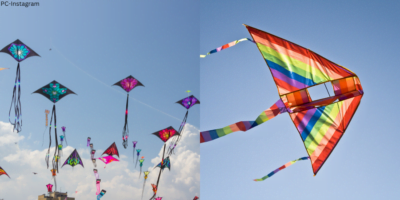The Geographical indication tag usually abbreviated as the GI Tag of India is an authentication of a product and its uniqueness on the basis of its definite geographical territory.
India is a country of articians.
Rightly mentioned by Emperor Babar in his book BABARNAMA.
The empower then mentioned the great craftsmen and artists of our country and indian traditional paintings. The fine artwork of Indians has often left the visitor awestruck. One cannot hold back but is competed to “aww” over the craft of Indian craftsmen. So today at Mad4India we want you to know more about the amazing Indian traditional paintings that are so sacred and unique that they are being protected through the GI Tag of India.
Indian arts are losing their charm even when they are the most charming piece of creation here are 7 Hidden Gems Of Indian Culture & Art, More Hip Than The Pop Art Of This Century But Fading In The Plight Of Time
What is the GI Tag of India or The Geographical Indication Tags India
The GI tag ensures that the product name may only be used by those who have been approved as users and who are physically present in the geographical territory. Primarily there are 4 categories in which the GI Tags are being allocated:
| CATEGORY | EXAMPLE |
| AGRICULTURAL | Kashmir Saffron(J&K), Manipuri Black Rice(MANIPUR), Khola Chilli (GOA) |
| HANDICRAFT | Mizo Puanchei(MIZORAM), Idu Mishmi Textiles (ARUNACHAL.P.), Kandangi Saree (TAMILNADU) |
| FOODSTUFF | Dharwad pedha(KARNATAKA), Trirupati laddu(ANDRA.P.), Bikaneri bhujiya( RAJASTHAN) |
| MANUFACTURED | Dindigul Locks(TAMILNADU), Feni(GOA) |
We have plenty of reasons to be proud of our country and that is the reason why we as Indians are actually MAD4INDIA. At the same time, we do have a responsibility of enduring and acknowledging the good that our country holds within its diversity.
Like 7 Classic Indian Dupatta For Girls To Stack In Their Wardrobes
- What is the GI Tag of India or The Geographical Indication Tags India
- 1. Rogan Painting – Dulhan ka lehenga, A Sacred Painting Styles
- 2. Madhubani Paintings- The Expression
- 3. Warli Paintings- One Of The Oldest Types Of Indian Paintings
- 4. Mysore Traditional Paintings- Patronized By Kings
- 5. Kalamkari Paintings- Tales Of The Gods
1. Rogan Painting – Dulhan ka lehenga, A Sacred Painting Styles
400 Years Old Art From NIRONA VILLAGE, KUTCH, GUJARAT.
This Painting is as old as 400 years, and in today’s scenario, there is ONLY one family which is keeping the art alive. An ancient textile art: The Rogan Art, with its origins in Persia, came to Nirona Village Kutch Gujarat around 400 years ago.
In this craft, Castor Oil is heated for 2 days and added in Pigmented Mineral Color with Binding Agent which results in a Thick and Shiny Paint, which is then used to create the artwork. while making the painting there is a dialogue between the two hands.
Bridal clothing in farming and animal-herding communities cultures used the traditionally Rogan art but due to the popularity of machine-made lehengas and other shortcomings this art form is now expecting the least clients and hence only the original Abdul Gafur family in Nirona is now keeping the art alive.
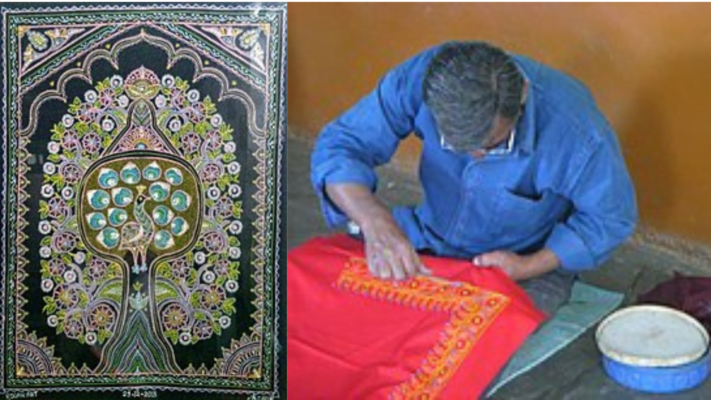
2. Madhubani Paintings- The Expression
Pouring Out Emotions On The Walls Of Home.
You remember days when you don’t get the Right kind of audience for your emotions. A person who just not listens to you but also understands. who is better than yourself and your home. This GI tag of India -protected painting is the solution you seek.
The Madhubani folk paintings of India were made by the ladies of Maithili village in Bihar as a manner of putting their emotions, goals, and thoughts on the walls of their homes.
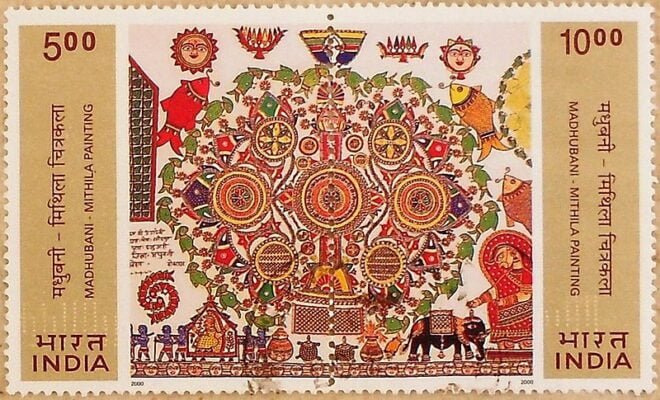
Celebrations and significant events like marriage started to involve the paintings over time. Gradually, surpassing conventional barriers, the Indian Madhubani painting started to gain the attention of art collectors on a national and worldwide level. Cloth, handmade paper, and canvas now serve as the foundation along with the customary newly plastered mud walls.
3. Warli Paintings- One Of The Oldest Types Of Indian Paintings
The Art You Know The Name You Don’t.
This is the art we all have come across once in our lives but the fact is maybe we don’t know the name. It is considered to be among the earliest schools of drawing. It uses Geometrical forms. In the ancient past, the tribal people would paint images of nature and daily life, including social occasions like weddings, on their walls.
Despite the decline, indian traditional painting art is still being practised in places like Palghar, Dahanu, etc. In 2014, Warli painting received Geographical Indication Tags India. Drawn on the red ochre mud walls because they are painted white (a color created from rice paste and gum).
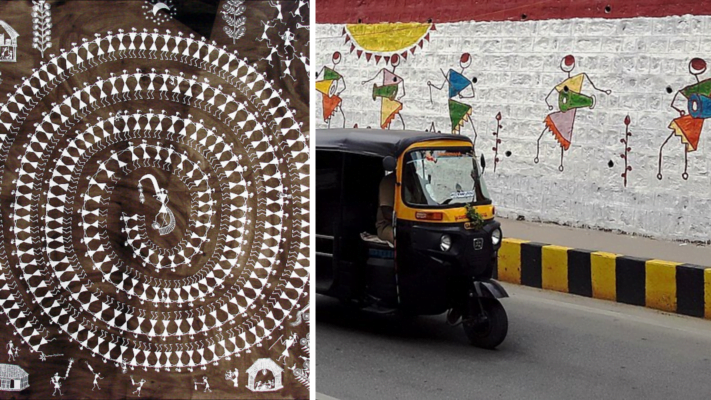
4. Mysore Traditional Paintings- Patronized By Kings
The One With Elegance, Muted colors, and Detailing.
The Mysore rulers directed and supported the development of “Mysore painting,” a significant tradition of South Indian art, in and around the Karnataka town of Mysore. Karnataka has a long and illustrious history of painting that dates back to the Ajanta era (2nd century B.C. to 7th century A.D.). During the reign of the Vijayanagar Kings, the distinctive school of Mysore art arose from the paintings of the Vijayanagara period (1336-1565 AD).
Paintings from Mysore are recognized for their grace, subdued colors, and detailing. The majority of these types of indian paintings feature Hindu gods and goddesses and are based on themes from Hindu mythology.
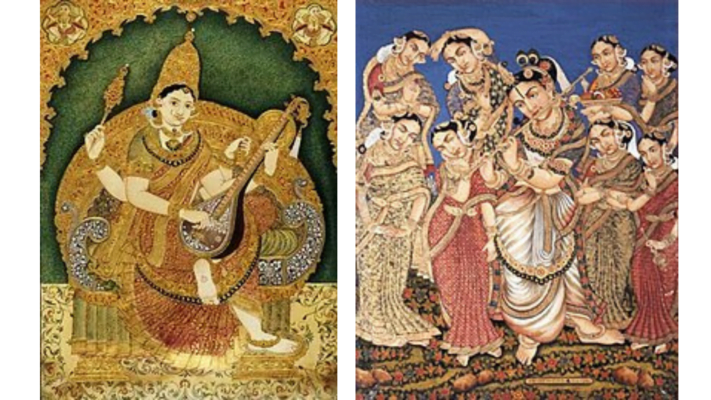
5. Kalamkari Paintings- Tales Of The Gods
Debut- Undefined. (Nobody certainly knows when it 1st appeared)
Even art historians are unsure of the exact year Kalamkari painting originally debuted, but it is thought to have begun in the present-day states of Andhra Pradesh and Telangana several hundred years ago.
The word “kalam,” which means pen, is the root of the phrase “kalamkari,” which describes a specific, detailed form of hand-painting onto the cloth.
This kind of representation was initially used to show scenes from sacred texts including the Mahabharata, Ramayana, and Bhagavatam. These depictions of the gods’ stories were widely used as beautiful backgrounds in temples.
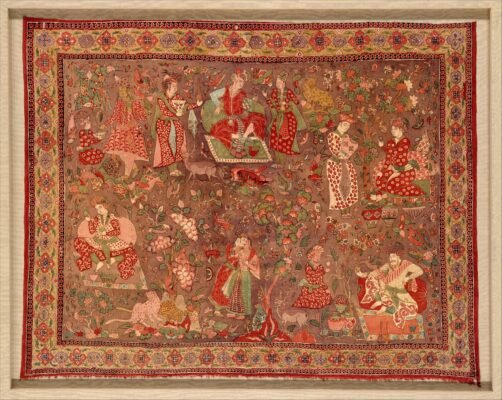
The Tree of Life, which joins heaven, earth, and the underworld while being firmly planted on the ground, is a particularly well-liked Kalamkari theme. It is also a sign of food because many creatures eat its leaves, reside in its branches, and seek out its shade. Popular subjects include peacocks, tigers, and deer.
Feature image source-Wikipedia
If you loved reading this story, you can also read Top 5 Indigenous Tribes Of India Protecting Indian Tribal Culture With Their Lives
If you know about more inspirational stories about any person, company, new idea, or social initiative, and want us to write it on mad4india.com, share such information with us on Instagram, Facebook or LinkedIn.


